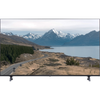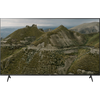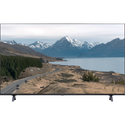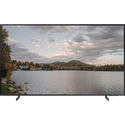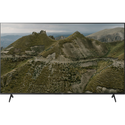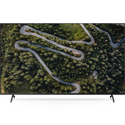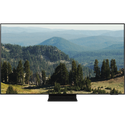A comparison of specs, key information, reviews, and best pricing from top retailers
Last updated -- hours ago | Report incorrect information
What we think

The PerfectRec TV team Learn more
Updated January 10, 2024·
If your priority is saving money and you mostly watch TV shows or use the TV in a well-lit room, the LG UP8000 would be a practical choice. However, if you're willing to invest more for higher performance in motion handling, which is key for watching sports or playing fast-paced games, and for better picture quality in dark scenes, the Sony X85J would be the superior option. The Sony also has a higher refresh rate which makes it more suitable for gaming. Keep in mind that the Sony may not perform as well in very bright rooms due to its screen type. Give Feedback
this description is based on the product variant with some specs and product variant with some specs. At the time of writing, the variant with some specs cost some dollars and the variant with some specs cost some dollars.
Advantages of the LG UP8000 (LCD)
- Good viewing angle
- Good reflections
Advantages of the Sony X85J (LCD)
- Good for bright room
- Good for gaming
- Good for sports
- Very good for news, talk, & other TV
- Very good for cartoons & animation
- Best in class for upscaling
- Best in class motion processing
Key differences
Picture Quality
5.7
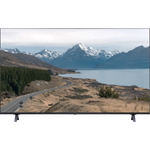
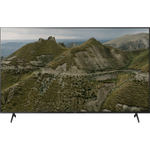
7.3
5.10/10
CONTRAST
7.88/10
5.8/10
COLOR VOLUME SCORE
7.3/10
LED
PANEL TYPE
LED
IPS
PANEL SUB-TYPE
VA
The Sony X85J (LCD) has good picture quality, while the LG UP8000 (LCD) has poor picture quality.
Movies & TV
5.3


6.5
5.10/10
CONTRAST
7.88/10
5.5/10
BLACK UNIFORMITY
6.9/10
7.5/10
UPSCALING
10.0/10
Yes
HDR10 SUPPORT
Yes
No
HDR10+ SUPPORT
No
No
DOLBY VISION SUPPORT
Yes
The Sony X85J (LCD) is only fair for movies & TV, while the LG UP8000 (LCD) is poor.
Sports
6.6


7.2
6.0/10
MOTION PROCESSING
10.0/10
60Hz
REFRESH RATE
120Hz
10.0/10
INPUT LAG SCORE
7.6/10
7.5/10
UPSCALING
10.0/10
6.5/10
SDR BRIGHTNESS SCORE
8.5/10
Yes
HLG SUPPORT
Yes
The Sony X85J (LCD) is good for sports, while the LG UP8000 (LCD) is only fair.
The Sony X85J offers a better experience for sports watching primarily because of its superior motion handling capabilities, which are critical for fast-paced action, compared to the LG UP8000. Additionally, the Sony X85J handles reflections somewhat better, making it a more suitable choice for rooms with varied lighting conditions, while the LG UP8000, although having slightly better viewing angles, falls short in these key areas for sports enthusiasts.
Gaming
5.7


7.6
6.7/10
RESPONSE TIME SCORE
7.8/10
10.0/10
INPUT LAG SCORE
7.6/10
6.0/10
MOTION PROCESSING
10.0/10
0.0/100
GAMING LOCAL DIMMING
0.0/100
6.0/10
GAME HDR BRIGHTNESS SCORE
7.5/10
The Sony X85J (LCD) is good for gaming, while the LG UP8000 (LCD) is poor.
The LG UP8000 has a fair response time and the best input lag, which is good for gaming, but its 60Hz refresh rate may limit the smoothness of fast-paced games. Meanwhile, the Sony X85J has good response time and input lag, and it also offers a higher refresh rate of 120Hz, making it more suitable for a smooth gaming experience with less motion blur.
Cartoons & Animation
5.9


8.6
5.9/10
COLOR GAMUT SCORE
7.3/10
5.8/10
COLOR VOLUME SCORE
7.3/10
6.5/10
SDR BRIGHTNESS SCORE
8.5/10
7.1/10
COLORS OUT OF THE BOX SCORE
9.1/10
6.2/10
GRAY UNIFORMITY
8.2/10
The Sony X85J (LCD) is very good for cartoons & animation, while the LG UP8000 (LCD) is poor.
The Sony X85J is favored for watching cartoons and animations due to its excellent colors out of the box and good color gamut, ensuring vibrant and lively images. Meanwhile, the LG UP8000 is considered poor for the same content as it has only good colors out of the box and a poor color gamut, which could lead to less accurate and less vivid colors.
News, Talk, & Other TV
6.2


8.2
6.5/10
SDR BRIGHTNESS SCORE
8.5/10
7.5/10
UPSCALING
10.0/10
The Sony X85J (LCD) is very good for news, talk, & other TV, while the LG UP8000 (LCD) is only fair.
The Sony X85J delivers a better experience for news and talk shows than the LG UP8000 because it has superior upscaling capabilities, which makes lower resolution content appear more detailed, and it offers better SDR brightness, enhancing visibility in various lighting conditions. Additionally, the Sony X85J provides more vibrant colors right out of the box and a wider color gamut, contributing to a more vivid and true-to-life picture.
Bright Room
5.9


7.3
7.5/10
VIEWING ANGLE
5.3/10
6.5/10
SDR BRIGHTNESS SCORE
8.5/10
5.8/10
HDR BRIGHTNESS SCORE
7.1/10
7.0/10
REFLECTIONS SCORE
5.9/10
The Sony X85J (LCD) is good for bright room, while the LG UP8000 (LCD) is poor.
The LG UP8000 struggles in bright rooms due to its fair SDR brightness and poor handling of reflections, making it less suitable for well-lit environments. In contrast, the Sony X85J is good for bright rooms with its very good SDR brightness and good reflection handling, providing a clearer picture when there's ambient light.
Cost
$480


$750
$200
$400
$600
$800
$1,000
$1,200
The LG UP8000 (LCD) has a price of $480 and the Sony X85J (LCD) costs $750.

Let Us Help Find Your Perfect TV
Find your new TV
Give feedback
We’re constantly working to improve.
How the LG UP8000 (LCD) and the Sony X85J (LCD) compare to other TVs
Spec Comparison
| LG UP8000 (LCD) | Sony X85J (LCD) |
GENERAL | |||
|---|---|---|---|
| Price | |||
$480 | $750 | ||
Brand | |||
Brand | LG | Sony | |
Release Date | |||
Release Date | July 1, 2021 | April 1, 2021 | |
Full name | |||
Full name | 43UP8000 | KD-43X85J | |
Screen Size | |||
Screen Size | 43" | 43" | |
Screen Resolution | |||
Screen Resolution | 4K | 4K | |
TV FEATURES | |||
|---|---|---|---|
Operating System | |||
Operating System | webOS | Android TV | |
Sound Quality Score | |||
Sound Quality Score | 6.7/10 | 7.5/10 | |
NextGen Ready | |||
NextGen Ready | No | Yes | |
HDMI Ports | |||
HDMI Ports | 3 | 4 | |
Coax Ports | |||
Coax Ports | 1 | 1 | |
DISPLAY QUALITY SCORES | |||
|---|---|---|---|
Picture Quality Score | |||
Picture Quality Score | 5.8/10 | 7.3/10 | |
Bright Room Score | |||
Bright Room Score | 6/10 | 7.4/10 | |
Gaming Score | |||
Gaming Score | 5.8/10 | 7.6/10 | |
Movies & TV Score | |||
Movies & TV Score | 5.4/10 | 6.6/10 | |
Sports Score | |||
Sports Score | 6.6/10 | 7.3/10 | |
PHYSICAL | |||
|---|---|---|---|
Dimensions w/o Stand (H x W x D) | |||
Dimensions w/o Stand (H x W x D) | 22.2" x 38.1" x 2.2" | 22.2" x 38" x 2.7" | |
Dimensions with Stand (H x W) | |||
Dimensions with Stand (H x W) | 24.5" x 38.1" | 24.7" x 38" | |
Weight without Stand | |||
Weight without Stand | 19.4 lbs | 22.5 lbs | |
VESA Mount | |||
VESA Mount | 200 x 200 | 200 x 200 | |
DISPLAY | |||
|---|---|---|---|
Color Depth | |||
Color Depth | 10 bit | 10 bit | |
Black Frame Insertion | |||
Black Frame Insertion | No | Yes | |
Auto Low Latency Mode | |||
Auto Low Latency Mode | Yes | Yes | |
Contrast | |||
Contrast | 5.1/10 | 7.9/10 | |
Local Dimming | |||
Local Dimming | 2.5/10 | 2.5/10 | |
SOUND | |||
|---|---|---|---|
Speaker Setup | |||
Speaker Setup | 2.0 | 2.0 | |
Speaker Power | |||
Speaker Power | 20 W | 20 W | |
Dolby Atmos | |||
Dolby Atmos | Yes | Yes | |
DTS:X | |||
DTS:X | No | Up to DTS Digital Surround, Bypass only | |
Shopping
LG UP8000 (LCD)
See more
Dig into reviews and images
Home Media Entertainment
Stratos Kampourogiannis | July 2021
"What we liked on this one was the very sharp 4K images it could display, its good up-scaling capabilities, nice viewing angles and extremely low input lag. Lastly the new webOS 6.0 is great even if it needs some time to get your bearings while the redesigned Magic Remote feels fresh even if functionality remains the same."
Get a great deal on the LG UP8000 (LCD) or the Sony X85J (LCD)
About LG
LG, a prominent TV brand from Korea, has played a significant role in popularizing OLED TVs. OLED technology is hailed as the future of TV technology. Their TVs employ WebOS, a proprietary smart TV software that not only offers seamless functionality but also includes gaming-specific features, earning praise from players worldwide. Often regarded as the gateway to unparalleled viewing experiences, LG's mid-range OLEDs come highly recommended, making them a worthwhile investment for those willing to stretch their budget for superior quality.
About Sony
Sony stands as a highly experienced and widely trusted TV manufacturer, earning a reputation that surpasses all others. A Japanese company, Sony has been making TVs for far longs than it has been making Playstation game consoles. Sony's high-end TVs are often regarded as the ultimate choice for videophiles, representing the epitome of quality, albeit at a premium price point. Renowned for their advanced and precise motion handling, as well as their cutting-edge local dimming algorithms, Sony consistently delivers unparalleled performance in these areas. They include Google TV software with all their TV sets, which grants access to the largest selection of apps available and they also include Bravia Core which is a movie streaming platform specifically for Sony TVs that offers higher picture quality by using more bandwidth.
Give feedback
We're constantly perfecting our model
TV guides you might be interested in
More comparisons for you
FAQs
FAQs about TVs
Why trust us
This information was produced and vetted by the PerfectRec TVs team. We are a product research and recommendation organization that meticulously reviews and evaluates the latest TV information and makes it digestible for you.
By the numbers
385
TVs evaluated
33,110
TVs stats compiled
21
Proprietary TVs ratings developed
156,030
Recommendations made
23,405
Consumer hours saved
About the TV team
Joe Golden, Ph.D
CEO and TVs Editor
Joe is an entrepreneur and lifelong electronics enthusiast with a Ph.D in Economics from the University of Michigan.
Jason Lew
Staff Expert & Software Engineer
Jason is a staff expert and software engineer that has been making laptop recommendations for 7 years and moderates one of the largest laptop subreddits.
Chandradeep Chowdhury
Staff Expert & Software Engineer
Chandradeep is a staff expert and software engineer and expert in televisions and monitors. He’s been making monitor recommendations for ten years.
Jaime Roldán
TVs Expert
Jaime is a Colombia-based TV expert. He is an electronics engineer with 8 years of experience in the telecom sector and has been making TV recommendations for 12 years.
